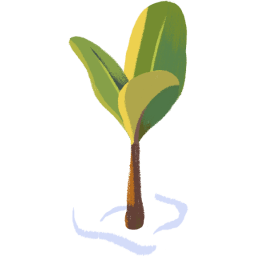A global summit kicks off in Glasgow
Some estimates say more than 30,000 delegates have descended on Glasgow for COP26. After pausing last year because of the pandemic, the annual climate change summit is back, with an intensified sense of urgency from the businesses, public leaders, activists, ministries, and Indigenous communities in attendance. Since the release of the United Nations’ bleak IPCC report in August—a code-red call to action to accelerate the work needed to cap global warming at 1.5 degrees Celsius—and President Biden’s September announcement that the U.S. would double climate change funding by 2024, it’s a can’t-look-away moment for this critical issue. COP26 has the potential to drive much-needed momentum in this race to save the planet. Still, some issues are vying for a spot on the agenda. Surprisingly, one of them is salmon.
A life defined by an epic journey
Wild salmon are an active, determined species that undertake an incredible journey during their lifetime. Born in rivers and streams, they migrate to the ocean as young adults. Their bodies adapt to the saltwater, where they usually spend several years and swim thousands of miles, feasting on fish, crustaceans, and invertebrates. Returning inland to spawn, salmon physiologically transform again for freshwater survival and to attract a mate. Their adventure ends where they were born, a place they identify by its smell. Feeding more than 130 different species, dead salmon also release nitrogen when they die, fueling the growth of streamside forests that capture and store carbon.
Harmful disruption by warming
Did you know climate change is imperiling our reciprocal relationship with salmon? Populations are plummeting to the point where salmon species could become extinct within the next three decades. There are different reasons for the die-off, from overfishing to dams that block spawning grounds to the destruction of wetlands where young salmon feed. But everything comes back to climate change, which threatens salmon’s existence at sea and in freshwater.
Warmer temperatures in the ocean in recent years have disrupted the food web and salmon’s diet. In the case of freshwater, droughts and heat waves are sending temperatures up, to the point it may not be cold enough to allow salmon to survive to reproduce. All of this makes their migration home—during which they may swim a marathon per day—even more daunting, if not impossible.
Protecting the climate by supporting salmon
Around the world, local and regional efforts are underway to help salmon adapt to climate change-related shifts before it’s too late. Communities are protecting existing salmon strongholds, restoring degraded river systems, removing dams from waterways, and advocating for salmon-friendly water and energy policies. Scientists are tracking salmon to understand emerging threats, and identifying cold water reaches within watersheds where salmon can take refuge as the planet warms.
At COP26, a broad coalition of artists, scientists, and conservation groups have propelled salmon to the forefront of global climate conversation via an art installation known as “Salmon School.” Hung in the delegates-only Blue Zone dining area, the exhibit features 350 mirrored-glass salmon conceived by American artist Joseph Rossano and hand-blown by Rossano and his team at the Museum of Glass in Tacoma, Washington, as well as artisans from around the world. Video accounts from scientists, artists, and Indigenous peoples striving to protect the species tell a digital story of the growing Salmon School community that now includes dozens of companies, individuals, and organizations. SeaLegacy, the sibling brand of Only One and also founded by Cristina Mittermeier and Paul Nicklen, signed on as one of the installation’s sponsors. SeaLegacy’s belief in the power of storytelling to inspire action that saves the ocean and the entire planet made us proud to join forces with organizations like Sherwin-Willams and Glacier Peak Institute to support this work.
Hopefully, the high visibility of the installation in the COP26 Blue Zone and its core message of “Protect Clean, Cold Water” will spark more dialogue around the connections between salmon, climate change, and planetary health. For salmon to thrive, global action on climate change is needed now. Without salmon, forests and marine plants will store less carbon, food webs will crumble, and humans could lose a culturally important species for hundreds of Indigenous groups across three continents, along with a multibillion-dollar global market. By focusing on wild salmon in taking climate action, we can improve water quality, protect ecosystems that store carbon, and make communities more resilient to the effects of climate change. The moment for citizens, scientists, and governments to rally around salmon has already arrived. It’s time we caught up.















